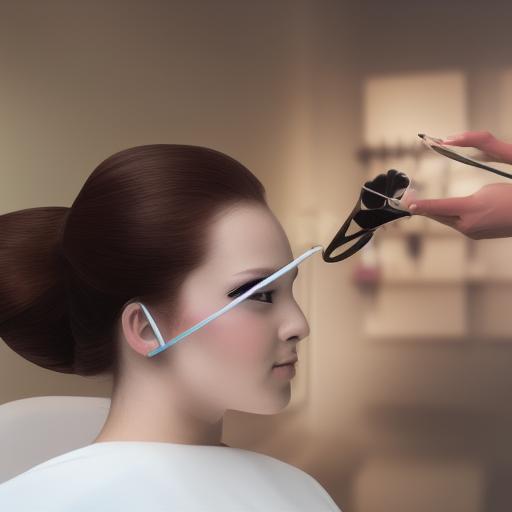
Starting a beauty salon is exciting! The dream of creating a luxurious space, offering incredible services, and building a loyal clientele is captivating. But before you invest your hard-earned savings and pour your heart into this venture, one crucial step often gets overlooked: market research. This isn’t just a box to tick; it’s the foundation upon which your entire business will be built. Without thorough market research, you’re essentially navigating a dense forest blindfolded, hoping to stumble upon success. This comprehensive guide will illuminate the path, showing you exactly why market research is paramount and how to conduct it effectively for your beauty salon.
I. Understanding the Importance of Market Research for Beauty Salons
The beauty industry is fiercely competitive. Hundreds, if not thousands, of salons are vying for the same customers. Without a clear understanding of your target market, their needs, preferences, and spending habits, you risk becoming just another indistinguishable face in the crowd. Market research provides the crucial insights you need to:
- Identify your ideal client: Who are you trying to attract? Are they young professionals, busy mothers, retirees, or a mix? Understanding demographics, lifestyle, and beauty preferences is vital.
- Pinpoint your niche: What makes your salon unique? Will you specialize in a specific service (e.g., organic hair coloring, bridal makeup), target a particular demographic (e.g., men’s grooming, plus-size styling), or offer a unique atmosphere (e.g., eco-friendly, luxury, bohemian)?
- Determine pricing strategies: Understanding your competitors’ pricing and your target market’s willingness to pay will help you establish profitable price points.
- Choose the right location: Market research helps identify areas with high foot traffic, sufficient parking, and a concentration of your target demographic.
- Develop effective marketing strategies: Knowing your target market’s media consumption habits allows you to tailor your advertising efforts for maximum impact.
- Minimize risk and maximize return on investment: By understanding the market landscape, you can make informed decisions that reduce the risk of failure and increase your chances of success.
II. Conducting Thorough Market Research: A Step-by-Step Guide
Effective market research isn’t about guessing; it’s about gathering data and analyzing it objectively. Here’s a structured approach:
A. Defining Your Target Market:
- Demographics: Consider age, gender, income level, occupation, education, marital status, and family size. Are you targeting students, professionals, or retirees? Are there specific ethnic groups you want to reach?
- Psychographics: Explore their lifestyle, values, interests, and attitudes towards beauty and self-care. What are their priorities? Are they eco-conscious, luxury-oriented, or budget-minded?
- Beauty Habits: Investigate their frequency of salon visits, preferred services, product usage, and brands they favor. Do they regularly get manicures, haircuts, or facials? What are their skincare routines?
Example: A salon specializing in organic hair coloring might target environmentally conscious millennials and Gen Z with a higher disposable income who prioritize sustainability and natural products.
B. Competitive Analysis:
- Identify your competitors: List all beauty salons within a reasonable radius of your planned location.
- Analyze their services and pricing: What services do they offer? What are their price points? What are their strengths and weaknesses?
- Assess their marketing efforts: How do they promote their business? What platforms do they use (social media, website, local advertising)? What is the tone and style of their marketing materials?
- Evaluate their customer reviews: Check online reviews on Google, Yelp, and other platforms to understand customer satisfaction levels and identify areas for improvement.
C. Market Size and Potential:
- Estimate market demand: How many potential customers are there in your target area? Consider population size, demographics, and the frequency of salon visits.
- Analyze market trends: Are there any emerging trends in the beauty industry (e.g., specific treatments, natural products, personalized services) that you can leverage?
- Assess market saturation: Is the market already overcrowded with similar salons? How can you differentiate yourself to stand out from the competition?
D. Primary Research:
- Surveys: Create short, targeted surveys to gather feedback from your potential customers. Use online survey tools like SurveyMonkey or Google Forms. (See Example Survey Template below).
- Focus groups: Conduct small group discussions to gain in-depth insights into customer needs and preferences.
- Interviews: Conduct one-on-one interviews with potential clients to explore their beauty routines and salon expectations.
E. Secondary Research:
- Industry reports: Access market research reports from organizations like IBISWorld or Statista to gain a comprehensive overview of the beauty industry.
- Government data: Utilize census data and other government resources to understand demographic trends and market size.
- Online resources: Use online search engines and industry websites to gather information about market trends, competitor analysis, and consumer behavior.
III. Analyzing Your Market Research Data & Developing Your Business Plan
Once you’ve collected your data, the next step is to analyze it carefully. Look for patterns, trends, and insights that will inform your business decisions.
- Identify gaps in the market: Are there unmet needs or underserved segments in your target area? Can your salon fill these gaps?
- Develop your unique selling proposition (USP): What makes your salon stand out from the competition? What is your value proposition to customers?
- Refine your target market: Based on your research, refine your target market definition to focus on the most promising segments.
- Develop your pricing strategy: Determine your pricing structure based on your costs, competitor pricing, and your target market’s willingness to pay.
- Create a detailed business plan: Use your research findings to create a comprehensive business plan that outlines your business model, target market, marketing strategy, financial projections, and operational plan.
IV. Example Survey Template for a Beauty Salon
Title: Tell Us About Your Beauty Habits!
Introduction: We’re conducting market research to understand the needs and preferences of beauty consumers in [Your Area]. Your feedback is invaluable! This survey should take approximately 5 minutes to complete.
Questions:
- Age Range: (Multiple Choice) 18-24, 25-34, 35-44, 45-54, 55+
- Gender: (Multiple Choice) Male, Female, Other
- Occupation: (Open-ended)
- How often do you visit a beauty salon? (Multiple Choice) Never, Less than once a month, 1-3 times a month, More than 3 times a month
- What services do you typically get at a salon? (Check all that apply) Haircut, Hair coloring, Manicure, Pedicure, Facial, Waxing, Makeup application, Other (Please specify)
- What is your approximate budget for salon services per month? (Multiple Choice) Under $50, $50-$100, $100-$150, Over $150
- What are the most important factors when choosing a beauty salon? (Rank in order of importance) Price, Location, Services offered, Atmosphere, Reviews, Staff expertise, Other (Please specify)
- What are your preferred brands of beauty products? (Open-ended)
- Are you interested in organic/natural beauty products and services? (Multiple Choice) Yes, No, Unsure
- What is your preferred method of learning about new beauty salons and services? (Check all that apply) Social media, Word-of-mouth, Online reviews, Advertisements, Other (Please specify)
V. Leveraging Learn Business for Support and Resources
Starting a business can be overwhelming, but you don’t have to navigate it alone. Learn Business (https://learn-business.org) offers invaluable resources and guidance to help entrepreneurs like you succeed. They provide a wealth of information on various business aspects, including:
- Business planning templates: Learn Business offers downloadable templates to help you create a comprehensive business plan, including market analysis sections tailored to the beauty industry.
- Marketing strategies: Their resources provide guidance on developing effective marketing strategies for beauty salons, encompassing digital marketing, social media marketing, and local advertising.
- Financial management tools: Learn Business provides resources to help you manage your finances effectively, including budgeting, forecasting, and financial analysis.
- Legal and regulatory compliance: They offer information on the legal requirements for starting and running a beauty salon, including licensing and insurance.
By utilizing the resources and templates available on Learn Business, you can streamline the process of conducting market research, developing your business plan, and ultimately, building a successful beauty salon.
VI. Conclusion: Market Research – Your Compass to Success
Market research is not an optional extra; it’s the indispensable compass guiding you towards a successful beauty salon. By meticulously studying your target market, analyzing your competition, and understanding the industry landscape, you can create a business that not only survives but thrives. Remember to use the structured approach outlined above, leverage the resources available through Learn Business, and continuously adapt your strategies based on ongoing market analysis. With thorough market research as your foundation, you’ll be well-equipped to transform your salon dreams into a thriving reality. The journey might be challenging, but with the right preparation and resources, your success is within reach.


Leave a Reply